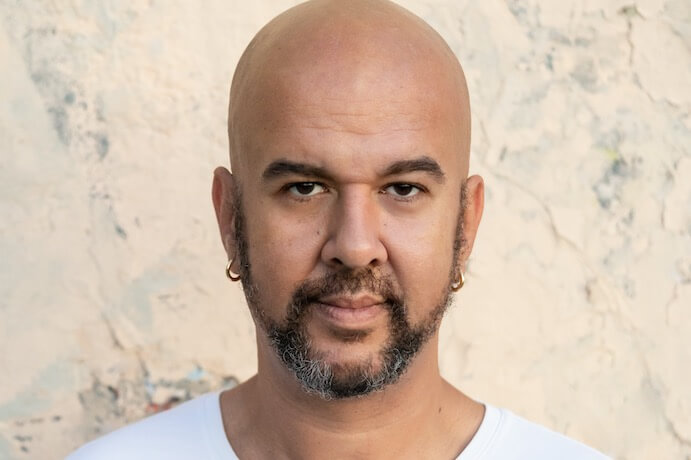ListN Up is a weekly series of artist-curated playlists that offer an intimate sonic portrait of contemporary artists by showcasing the diverse and stylistically varied music that influences their creative practice.
Praised by the New York Times as “surreal” and the Chicago Tribune as “utterly crafted,” Marcos Balter’s music is regularly performed worldwide by many of today’s most prominent artists. Known for his eclecticism and innovative collaborations, he has been awarded fellowships from the Guggenheim, Leonard Bernstein, and Civitella Ranieri foundations, among others. He currently teaches Composition at the University of California, San Diego.
Marcos Balter–Photo by Matt Zugale for Miller Theatre
Here’s what Marcos had to say about this playlist:
Listening is my absolutely favorite activity. It centers me, teaches me, amazes me, and humbles me. Pauline Oliveros, one of my heroes and a former professor at my current school, once said: “Listen to everything all the time and remind yourself when you are not listening.” Below are some sounds that have nourished my ears, brain, and heart lately while reminding me to pay very close attention to my own experience as a listener.
The Will to Adorn by George Lewis, performed by the International Contemporary Ensemble, (Steven Schick, conductor)
Inspired by Cheryl Wall’s book “On Freedom and the Will to Adorn: The Art of African American Essay,” this work makes me question what is excessive or essential, what is fragmented or linear, and how to find threads among a multitude of ideas. A true masterclass in rhythmic, motivic, and timbral inventiveness, beautifully played by my dear friends from the International Contemporary Ensemble, and expertly conducted by my UCSD colleague Steven Schick.
In Quiet Places Where the Moss Grows Green by Vicente Hansen Atria, performed by Vicente Hansen Atria and Andrew Boudreau
Speaking of rhythm, Vicente’s work is a deliciously microtonal labyrinth of polyrhythms. In Vicente’s own words, this work was inspired by what he considers “the fundamental timbre of Latin American music: the sound of multiple fretted strings, resonating in unison.” But, rather than imitating it, he reimagines this sound “as the chamber music of an oddly familiar future.”
Mobile by Michelle Agnes Magalhães, performed by Ricardo Descalzo
In a recent interview, Michelle–one of my favorite contemporary Brazilian composers– mentioned that “Mobile” was strongly influenced by electronic music discourse. I love how she makes me forget sometimes that this is a work for acoustic piano.
Underbelly by Steph Richards, performed by Steph Richards, Jason Moran, Stomu Takeishi, and Kenny Wollesen
Steph’s latest album, SUPERSENSE, comes with a scratch-and-sniff card, aimed at reimagining–at least in part–the tactility of live performance. She often collaborates with incredible animators, such as Cossa in this video, and stellar improvisers. This album is no different: Jason Moran on piano, Stomu Takeishi on bass, Kenny Wollesen on drums and wollesonics absolutely kill it.
“Nave Gurudasya/Falta di Karta/Labaremú” by Ganavya Doraiswamy and Mû Mbana
Ganavya is a Tamil Nadu-raised and New York-born multi-instrumentalist, dancer, improviser, and scholar that approaches past, present, and future in non-linear and truly intersectional ways. Featuring Mû Mbana from Guinea Bissau, this rendition of “Nave Gurudasya”–a 17th-century song by Sant Tukaram–sounds like it could have been written today. Or tomorrow. Or a thousand years ago.
Bwiti ritual music led by Papé Nziengui
Bwiti, one of the three official religions in Gabon, makes extensive use of music in its iboga-induced psychedelic rituals. In this short clip, a moungongo (mouth harp) solo is followed by Papé Nziengui in his 8-string harp, and then a bisanza (shaker) and nkul (an idiophone made of a slitted wood log), gradually locking into a trance-enhancing pulse. This is music with a very specific social goal, rooted in ancestralism and collectivism.
I CARE IF YOU LISTEN is an editorially-independent program of the American Composers Forum, funded with generous donor and institutional support. Opinions expressed are solely those of the author and may not represent the views of ICIYL or ACF.
A gift to ACF helps support the work of ICIYL. For more on ACF, visit the “At ACF” section or composersforum.org.

